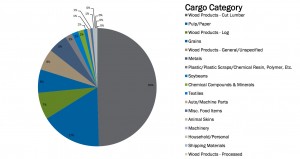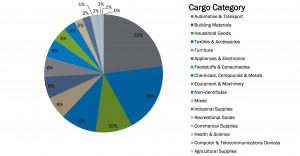It’s time to say ‘no’ to coal and ‘yes’ to jobs
British Columbia presently mines, transports and ships metallurgical coal used in the steel industry in Asia. These are where B.C. jobs are focused. However, the proposed Port Metro Vancouver, Texada Island and even recent Prince Rupert expansion of coal exports, is largely for thermal coal produced in the United States that is burned to produce electricity. North American markets are drying up for this thermal coal due to an explosion of shale gas production. Shale gas burns much cleaner and more efficiently than coal. Even China recently announced plans to significantly reduce their use of coal.
Washington, Oregon and California have all said no to the export of this excess thermal coal through their ports. So should British Columbia.
This is not about lost B.C. jobs or economic growth. It’s about turning the Best Place on Earth or Beautiful British Columbia into a petro province and the message that this sends internationally.
The premier recently toured Asia touting B.C. natural gas as a means of reducing Asian greenhouse gas emissions arising from the burning of thermal coal. Even in the case of Japan, which is shutting down its nuclear reactors, the premier is arguing that B.C. should earn credits for potential greenhouse gas reductions. She argues that Japan could build coal-fired electricity plants if they don’t switch to natural gas — arguably a bit like me saying “give me a credit or I’ll buy an SUV instead of a hybrid.”
The B.C. government needs to be consistent with its approach to greenhouse gas management. We need to send a strong signal to the market that our principles: that the well-being of future generations of British Columbians are not for sale.
But this isn’t just about saying no to development. We can instead promote real opportunities for the growth of stable, well-paid BC jobs.
The Port of Prince Rupert is the third largest port on the west coast of North America and the closest to Asia. Prince Rupert also benefits from having the lowest-grade passes through the Coast and Rocky mountain ranges. This means that ships can get to Asia three days faster than from any other North American port, and trains can be longer, and burn less diesel, as they transport goods eastward.
The modern Fairview container facility built in 2007 is a highly efficient direct ship-to-train system used for both importing and exporting goods to and from Asia. Most of the exports are wood products, grains, metals, and other resources and most of the imports are manufactured goods (see Figure).
Figure: Prince Rupert cargo category exports (left) and imports (right) by percentage of total. Source: Prince Rupert Harbour Authority.
The potential for job growth at this port is profound. Presently the container facility does not have a capacity for destuffing and restuffing containers upon their arrival from Asia. Let’s suppose a company like Walmart or Costco wants a large order of fridges, stoves, ipods, kettles, shoes and cell phones all manufactured in China. Right now, containers would come into the Port of Prince Rupert; they would be loaded onto a train and shipped to east or to the mid-west US where destuffing/restuffing would occur (in Chicago, for example). There is no reason why the containers couldn’t be destuffed and all of the Walmart or Costco orders restuffed together in their own containers in Prince Rupert instead of in Chicago. Such a process would involve hundreds of jobs and would give North American distributors faster and potentially less costly access to their inventory.
So together let’s say no to coal and yes to jobs.







7 Comments
I work at the container port in Prince Rupert. There are some stuffing facilities already in the area. At present, logs and lumber are stuffed in containers locally. These are local products, so it is logical that they get loaded into containers here.
Additionally, CN has some facilities in Prince George that may be used for stuffing containers with pulp and other wood products.
There is movement in the US Senate to place surcharges on the containers coming from Prince Rupert and Vancouver to compensate for charges placed per container in the US to pay for harbour maintenance fees. This could make a difference as to the throughput in Prince Rupert. I would prefer not to bait the bear at present with any additional facilities.
Thanks for the comment Jake. Of course it would be necessary to tread carefully on this. Bait the bear is not good. But moving towards unstuffing and restuffing would certainly benefit the bottom line for companies wanting to get product to market in a timely, efficient and lower-cost fashion.
No to coal and yes to jobs, but also no to fracking. It is well documented the destruction to the water table caused by fracking.
In principle that sounds enticing. But in reality, the whole Prince Rupert set up is to get cargo traffic in to the U.S. mid-west much faster than either Tacoma or Long Beach. And since CN is largely an american company with a Canadian name, I can’t see them pushing for stuffing and destuffing facilities on B.C.’s North Coast while taking away jobs from hard working americans.
Thank you for the link Paul. I entered the above into the feedback.
Let the port know what you think….
http://realporthearings.org/?page_id=126